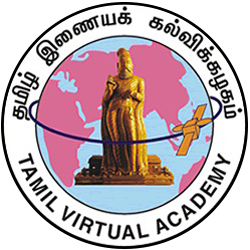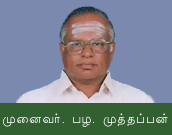Primary tabs
-
p20216 Lesson 6 Saiva Philosophy
Saiva Siddantam occupies a special place among the various Hindu religious philosophies. This lesson offers a bird’s eye view of the principles of Saiva Siddantam. The Vedas and the 28 Siva Agamas revealed by Shiva are considered to be the fountainhead of Saiva Siddantam. The core philosophy of Saiva Siddantam concerns 3 cardinal concepts: the ‘pathi’, ‘pasu’ and ‘pasam’. ‘Pathi’ refers to Shiva, the Supreme Being. The living forms that take birth and die are called ‘pasu’. These are infinite in number. ‘Paasam’ signifies the bonds that afflict the living creatures. These are ‘aanavam’ (inherent darkness of the soul), ‘kanmam’ (actions and their consequences) and ‘mayai’ (material cause of the universe).
The lesson then outlines very briefly the siddanta principles relating to pathi, pasu and pasam. The siddanta principles first describe the various attributes of Shiva, the pathi. They declare that Shiva is the Primal Being, the Supreme Being who transcends time and space. He is without a beginning or an end. Unlike the pasus or the living creatures He is not bound by impurities. He is immanent. He is with and without a form. Shiva manifests Himself in 3 ways: as a formless presence (or aruvam), as possessing a divine form (or uruvam) and as being with and without a form at the same time (aruvuruvam).
Pasu or the souls of living creatures are also eternal like pathi but caught in the cycle of birth and death. Pasu is infinite in number and is bound by impurities known as pasam or ‘malangal’.
Pasam or ‘thalai’ is the bondage that ties the soul to material world. They are also referred to as ‘malangal’ or impurities that prevent the soul from attaining liberty.
In Saiva Siddantam for the creation of the phenomenal world, Shiva is the efficient cause, Mayai is the material cause and Sakthi is the instrumental cause.


